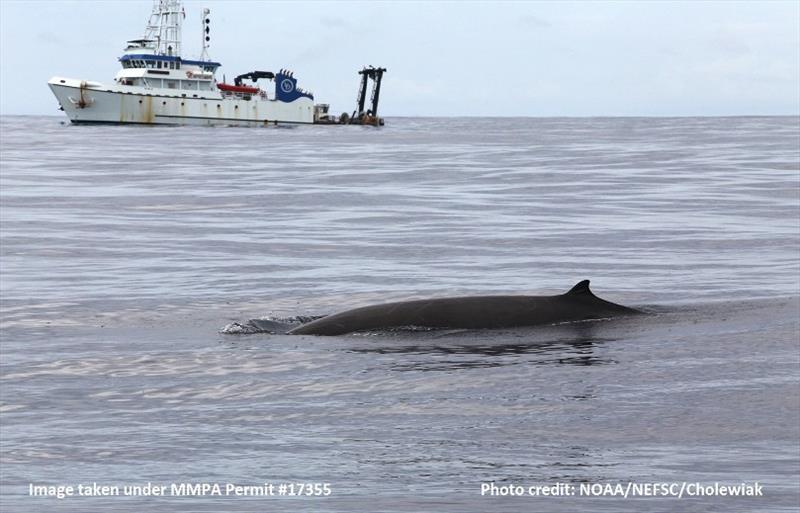
Science Center’s top five stories of 2017
by NOAA Fisheries 5 Jan 2018 10:26 UTC

A Cuvier's beaked whale with the R/V Hugh Sharp in the distance © NOAA Fisheries / Danielle Cholewiak, NEFSC
Think of this as the Science Center “unplugged” or “the story behind the story.” We recently sat down with science writer Shelley Dawicki to find out what her top five favorite feature stories and science spotlights were in 2017. We asked her why they were her favorite and what she learned along the way. In the end, Dawicki said it’s, “Hard to pick just a few favorites as I liked all of them!”
Milford's Green Rooms: Growing Microalgae for Shellfish Aquaculture
I think of this unique facility as raising the algal version of laboratory mice. It has been serving a wide community of researchers, not only at our Center but at academic research organizations and in the shellfish industry worldwide, for more than half a century by providing a very basic ingredient for shellfish survival and growth: the right food. The demands for pure and controlled culture conditions are essential for the scientific integrity of experiments, ranging from biochemical analyses to shellfish nutrition and disease studies. The facility’s impact is enormous, yet few in the general public know about it and the dedicated staff who keep it going.
Drifters May Help Improve Regional Harmful Algal Bloom Forecasts in Gulf of Maine
The drifter project is a great example of citizen science. Students of all ages get involved, building the surface drifters from very simple materials. Other members of the public volunteer to launch them. In the process the students learn about ocean currents and various sciences and can track the drifter as it moves around the ocean. In this article the drifters help test a scientific hypothesis about the leaky gyre in the Bay of Fundy and the impact it may have on harmful algal blooms that affect shellfish and the commercial shellfish industry in Maine. These student-built drifters may help improve regional bloom forecasts in the future, showing the impact a simple device and citizen scientists can have given the opportunity. It’s a win-win situation - the scientists get needed data and the students get an opportunity to participate in a fun, educational yet meaningful project.
From Beaches to the Bottom of the Sea, Microplastics are Everywhere
This article focused on an important issue in society - plastic pollution - and how it can impact marine species. It also showcased some of the expertise at our Center's Sandy Hook Laboratory, where chemists are using sophisticated instruments to study a variety of issues, from ocean acidification and its impacts on fish and shellfish to mercury and other industrial contaminants in fish. I hope this article helped broaden the public’s view of the range and diversity of research projects conducted by the Center’s various facilities.
Following the Fish: Where New England's Catch Goes and Why it Matters
Most of us don't know where the fish caught at sea ends up besides the local fish market. The journey can be short or thousands of miles long, depending on the species. Learning what happens to various species, and how they are used in different parts of the world, was interesting to me as a seafood consumer. This project is an example of how social sciences contribute to our understanding of the commercial fishing industry and its social and economic impacts.
Beaked Whale Cruise a Success Despite a Hurricane
Planning a research cruise is just one part of a long process, one that requires patience, persistence, the ability to adapt, and sometimes just plain luck. What if you have only one chance to do your study, and you are not sure you will even find what you are looking for? This feature highlights some of the challenges of conducting research at sea, how technology is helping us learn about some of the more elusive marine mammals, and the importance of teamwork. I've written a number of stories about marine mammal research, but this one showed a bit more about the realities and human side to the effort.